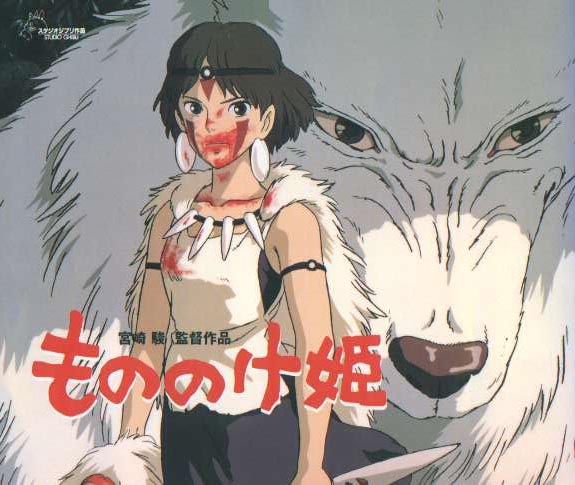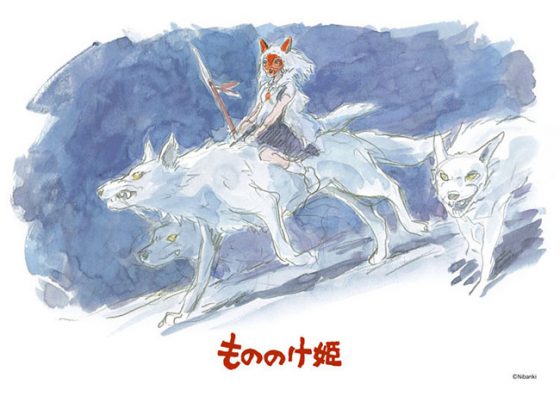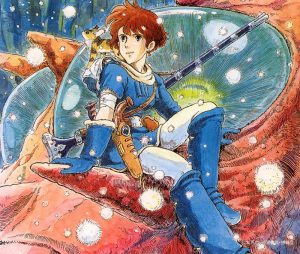
Studio Ghibli is internationally-renowned, garnering fans across the world for the studio’s amazing animation and timeless stories. One of the mastermind behind the studio is Hayao Miyazaki, director, artist, and scriptwriter. His works have influenced the industry and helped elevate Japanese animation in the eyes of the world.
Princess Mononoke is one of Ghibli’s works, a film that depicts a war between humanity and nature in nuanced ways. Choosing to portray this film in a more graphic manner, Princess Mononoke received a PG-13 rating. Early advertising (in Japan) chose to depict violent scenes so parents were aware of the film’s content.
Princess Mononoke is intended for an older audience. Motivations, the righteousness of its characters, and the fault of the conflict are nuanced. The result is a story that doesn’t want easy answers. It wants its audience to think. In this article, we’ll discuss a bit about nature and Lady Eboshi, and as a result, show how the film emphasizes ambiguity.
The Contrast of the Tribes and Forest Spirit

Animals within Princess Mononoke borrow from traditional imagery while also defeating preconceptions. In the film, there are two main tribes of animals, the wolves guided by Moro, the mother goddess of the wolves, and the boar tribe that is guided by a new leader Okkoto (the previous one, Noro, dies at the beginning of the film and curses the protagonist). Using the two main tribes, the film gives you a brief look into the forest.
In Japanese tradition, cats are normally voiced by women and dogs by men. Despite Moro being a mother, her voice is covered Akihiro Miwa (an apt casting, since Akihiro is famous for playing female characters). San the “wolf princess,” who was abandoned by humans, is fiercely loved and protected as one of wolves. She is part of the pack. Despite wolves following some traditional concepts, they are arguably the least violent of the animals.
The boar tribe, in contrast, is aptly “pig-headed.” They are more gung ho about fighting humans, refusing to see San as anything other than human. Despite knowing about a trap laid out by humans, they charge head first, hoping to end the war in a final battle.
With these two main tribes contrasting each other, we now move onto something they share. Both worship the Forest Spirit (Deer God). The Forest Spirit resembles a deer, but its face resembles a human. It also takes a different form at night, an ethereal titan. While common perception of a deer is non-violent and peaceful, it is the Forest Spirit whose power is most fearsome. It governs life and death, saving the dying Ashitaka and ultimately ending Moro and Okkoto’s life. At the end of the film, the Forest Spirit’s death and rebirth heals the wounds and remedies the curses of the war. While the Forest Spirit governs animals, it also commands power over humans, helping resolve the conflict and unveiling the influence of nature in human life.
Lady Eboshi
On the other side of the conflict is lady Eboshi. As the leader of Iron Town, she heads the war to claim land from the forest. Depictions of the town have its smoke quell the beautiful landscape, the smell of smoke even later playing a part in the strategy for the war. To maintain her power as an outlier settlement, Lady Eboshi ravages the land for sand, creating the iron that makes her muskets and bullets.
From the perspective of the forest, she is evil. Her push to take the forest claims lives. Her very bullet sparks the hate that curses Noro’s spirit and later, Ashitaka. What stops the viewers from taking on this perspective is what else Lady Eboshi represents.
She saves the marginalized. Former slaves, the diseased, and the unwanted--she saves them all, gives them work, and makes them feel wanted. While the main conflict of the film is between Lady Eboshi and the forest, Lady Eboshi also fends off samurai seeking to seize her technology. She protects her own against the abuses of society
Just as the forest has its own ecosystem and morality, so does Eboshi’s society. Both of them work with their own set of morality, but neither are meant to be defined as clearly one-dimensional: just good or just evil. Life is more ambiguous than that.
Final Thoughts

As with all directors, I find myself confused when first experiencing their work. Fortunately, Miyazaki’s talented writing was my guide. Even without diving into directing, there is a lot to appreciate from Miyazaki’s writing, and I decided to focus on that for this particular article.
While I’m certainly no expert of Studio Ghibli’s work, I greatly appreciated trying something new. The craft of making characters that resonate with their audience has lead me to better understand the allure of Studio Ghibli.


